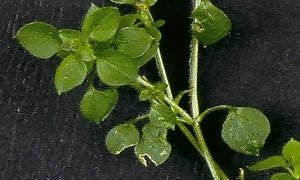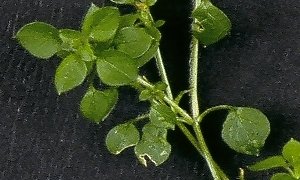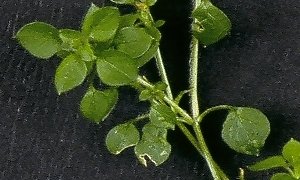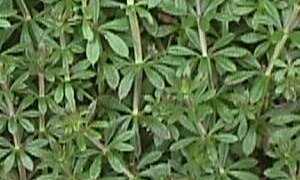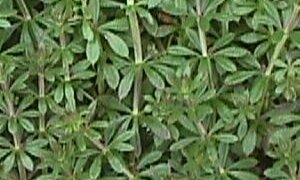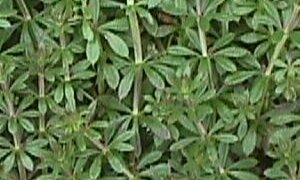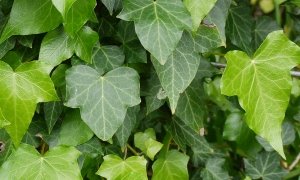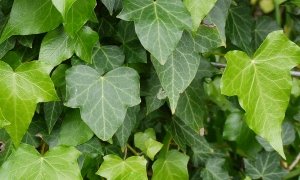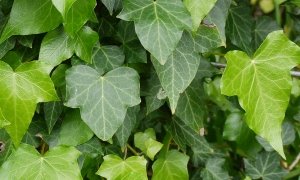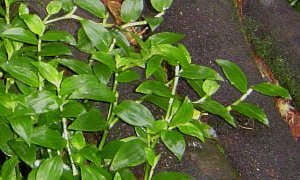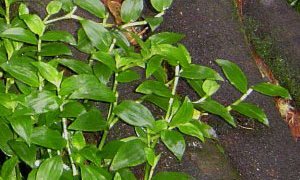Botanical name: Calystegia sylvatica
Family name: Convolvulaceae
Overview
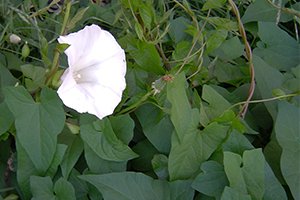
Great bindweed.
This clambering weed with long vines has been known as greater bindweed in the past, and is also incorrectly called convolvulus. It is very commonly found in home gardens, roadsides and waste areas, with the distinctive large white trumpet-shaped flowers making it easy to spot from a distance.
Great bindweed has been particularly troublesome recently where attempts have been made to establish native plants into waste areas, especially along streams as part of creating riparian strips to protect waterways, as it often grows over the newly planted shrubs and smothers them, blocking out light which can be seen in the third image.
It is a deciduous species, which means it dies back in winter to the extensive rhizome system underground. So spraying out an area in winter when it is dormant means the weed will be poorly controlled, and then it comes back again in spring.
Distinguishing features
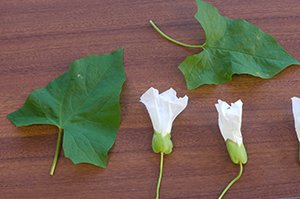
The leaves and flowers of the great bindweed.
The stems of great bindweed can reach many metres in length, twining around surrounding vegetation for support. It has heart-shaped leaves up to 18 cm long and the white flowers can get up to 8 cm in diameter.
Each flower produces only one or two large seeds, but these seeds can form new plants should the weed be successfully killed off with herbicides.
It can be confused with other weeds, pink bindweed (Calystegia sepium) looks similar except the flowers are mainly pinkish with some whiteness. Many bindweed plants with pink flowers are a cross between great bindweed and pink bindweed and have flowers that are paler pink with more whiteness. The bracts at the base of the flower in great bindweed overlap more than in pink bindweed.
Field bindweed (Convolvulus arvensis) also has white, trumpet-shaped flowers, but these tend to be smaller than great bindweed (about 3 cm diameter), and the leaves are slightly different in shape and smaller too (usually less than 4 cm in length).
Pink bindweed is native to New Zealand, and another couple of native bindweeds that look similar are shore bindweed (Calystegia soldanella) and New Zealand bindweed (Calystegia tuguriorum). Shore bindweed is quite small and is mainly found by the sea, has pink flowers with white stripes, kidney-shaped leaves and no twining stems. Likewise, the white flowers of New Zealand bindweed and its leaves are smaller (less than 4 cm long) than the great bindweed.
Control
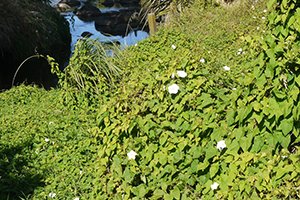
Great bindweed near stream.
Because of its extensive underground rhizome system, good control of great bindweed will only be achieved if herbicide can be translocated sufficiently down into this system. We have recently conducted and published research on the control of great bindweed. As the weed sends sugars from its leaves down into the rhizomes in autumn ready for winter dormancy, we feel that the best time to spray great bindweed foliage initially is in autumn.
Of the various herbicides we used to control this weed, we found the best products were a 2,4-D/dicamba mix (Banvine, Yates Woody Weedkiller) and a mixture of triclopyr, picloram and aminopyralid (Tordon Brushkiller XT). We generally found glyphosate, metsulfuron and clopyralid to be much less effective, though aminopyralid (T-Max) showed some activity.
Herbicide treatments made in autumn didn’t give total control with any of the herbicides, but the plants made a full recovery if left until the following autumn to respray, so we consider the best strategy is to spray once in autumn, then follow up on any regrowth in spring. As all of the herbicides tested will be damaging to young shrubs in riparian plantings, we only sprayed 90% of each vine to simulate not spraying parts covering native plants we wanted to keep alive.
If all of the plants had been sprayed, perhaps a higher level of control would have been achieved. A thesis has been written about this work for people wanting more detail. If planting up a riparian zone in new native plants, make sure any great bindweed present is killed first before any planting begins, to prevent problems later.
Similar species
Chickweed
Chickweed scrambles along the ground, has little white flowers, and a single line of hairs on the stem.

